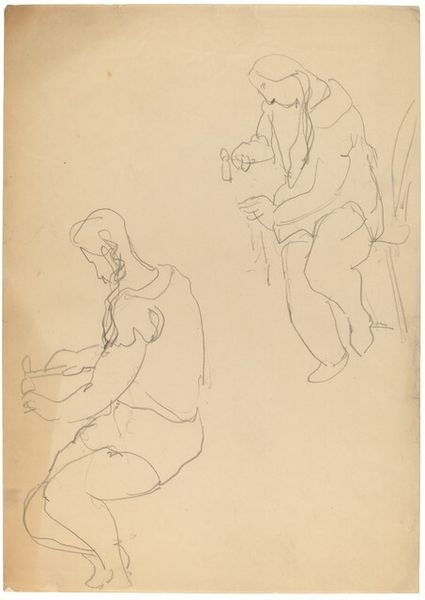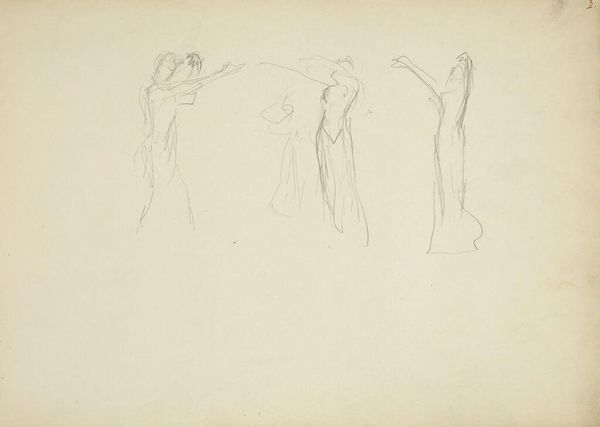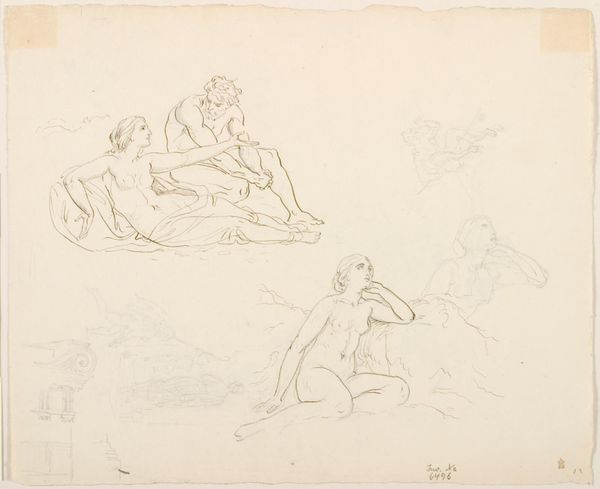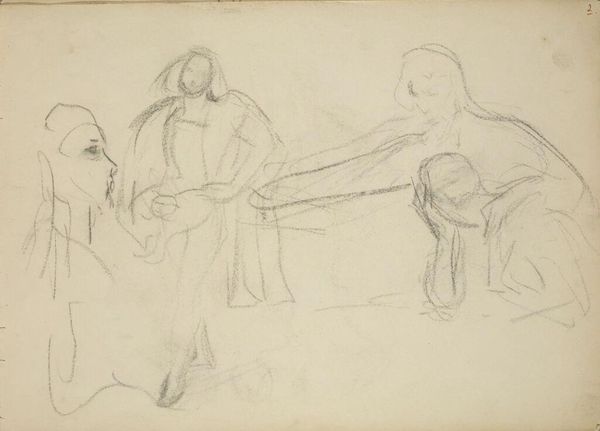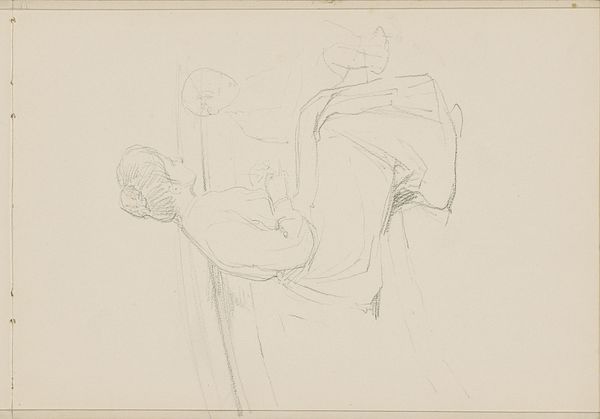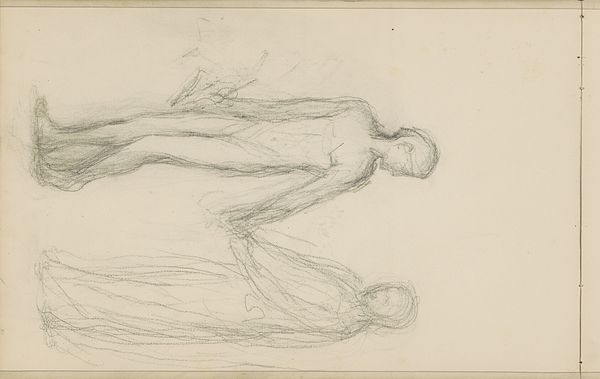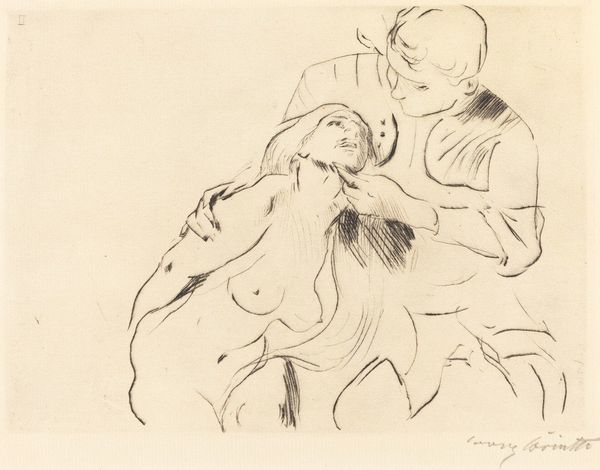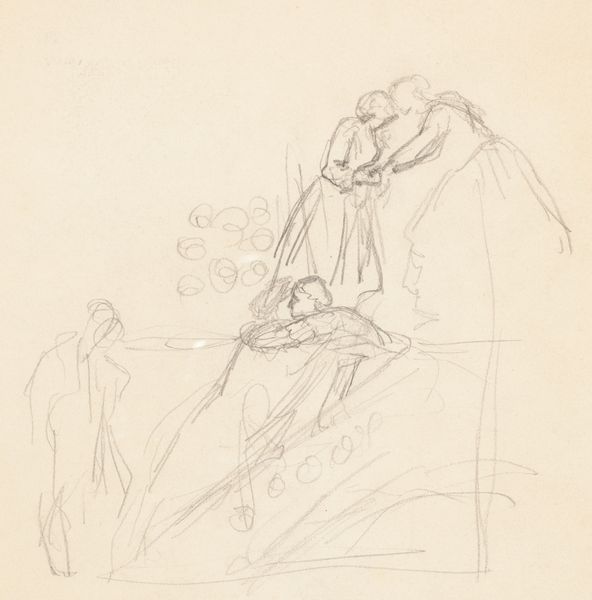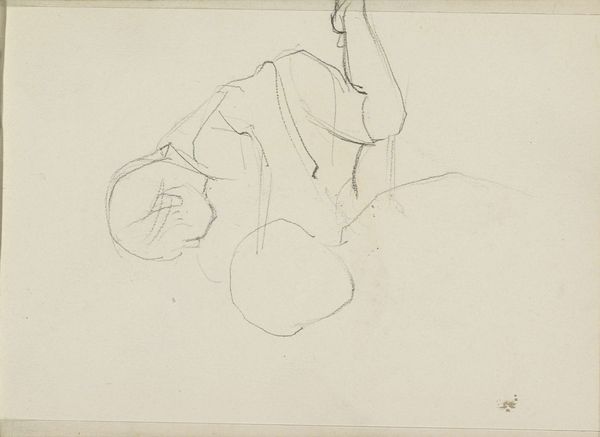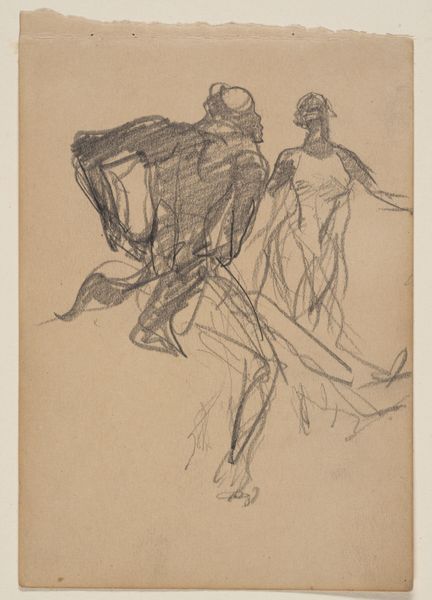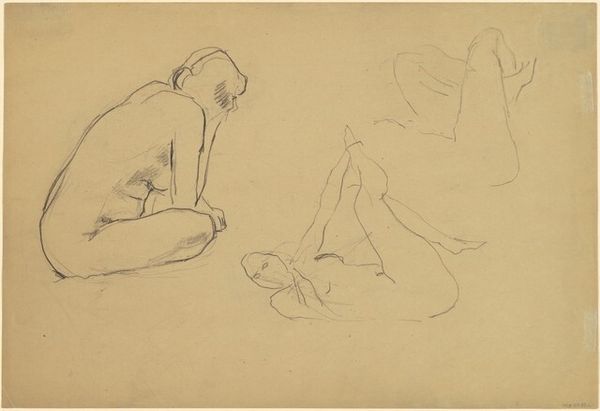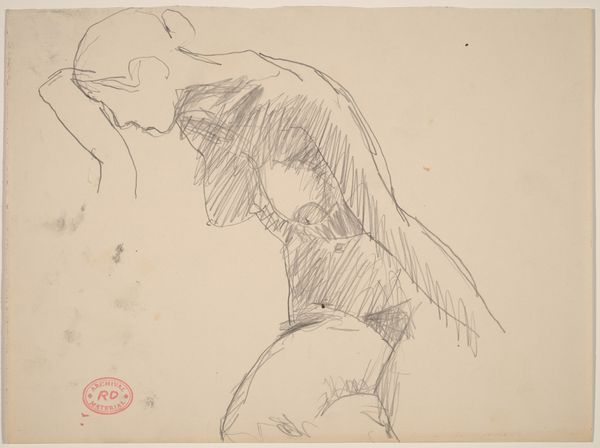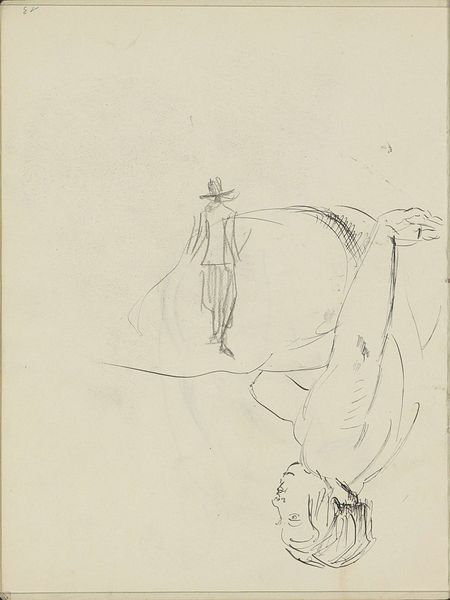
drawing, pencil
#
portrait
#
pencil drawn
#
drawing
#
impressionism
#
pencil sketch
#
landscape
#
figuration
#
pencil
#
history-painting
Copyright: Public Domain: Artvee
Curator: What strikes me most is the immediate intimacy this seemingly simple drawing evokes. Editor: It's deceptively simple, isn't it? What we're looking at is Edgar Degas' "Café Concert Rehearsal," a pencil drawing from 1877. It offers an informal look at the Parisian entertainment scene of the time. Curator: The woman’s pose almost reminds me of a ballerina. Given Degas' fascination with dancers, I wonder if this is a performer getting ready or perhaps recovering backstage. There’s a sense of both anticipation and exhaustion woven together here. Editor: It's important to remember how deeply the "café-concert" was ingrained into Parisian society during this period. These were spaces for socializing, seeing, and being seen, especially among the middle and working classes. Curator: Right. And considering this context, do you think the prone figure could be a symbol of the late 19th century "flaneur," a detached observer of modern urban life? His listless position provides a stark contrast to the presumed readiness of the upright woman. The interplay suggests something deeper about the social roles within these venues. Editor: Possibly. And I am drawn to how Degas utilizes what is implied through posture as social signifiers here, versus using detail. It’s like he has a deep knowledge of societal conventions that he renders using these visual shorthand gestures. Curator: It really does exemplify the evolving role of art in Parisian society, reflecting shifts in social class and cultural venues and customs through the simple lines and understated subjects presented. The way it invites speculation on power and identity remains captivating. Editor: Absolutely, that casual record somehow captures the feeling of transformation during this very specific point in time in Paris and in the broader art world. I appreciate the opportunity it provides us to view culture in transition, in the form of an elegant visual study. Curator: Indeed, I came away today appreciating how visual details often do speak far more directly when they suggest unspoken commentary or social change. It is through this sketch where the viewer must then ask, what were people feeling about being modern, at this time? Editor: It is truly the sense of immediacy of observation and thought combined within a medium often used only for study that continues to resonate with me and prompt many levels of contemplation.
Comments
No comments
Be the first to comment and join the conversation on the ultimate creative platform.
